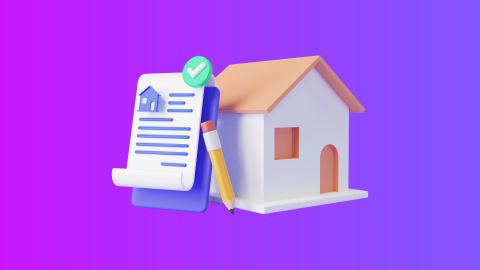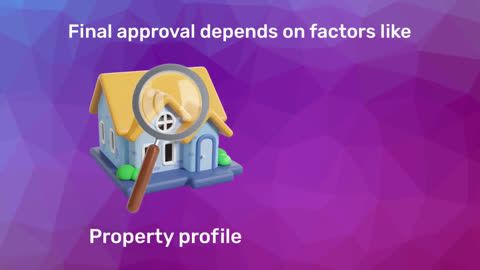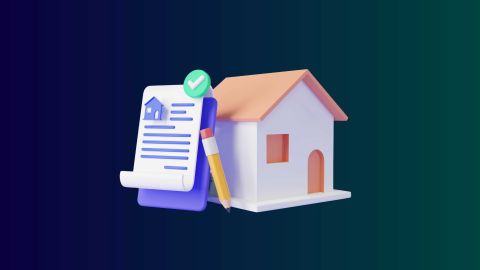What is a housing loan declaration form?
A housing loan declaration form is a vital document used during the home loan application process. It is designed to collect comprehensive details about your financial health, employment status, and the specifics of the property you wish to purchase or construct. This form provides lenders with a clear view of your financial situation and helps them assess your ability to repay the loan.The form typically includes sections for personal information, employment details, and financial status. It also requires you to declare your assets and liabilities, including other loans and investments. By filling out this form, you are confirming that the information provided is accurate and complete. This helps the lender determine your creditworthiness and eligibility for the loan amount you are seeking.
In addition to personal and financial details, the form also asks for information about the property, such as its location, estimated value, and the purpose of the loan. Accurate completion of the housing loan declaration form is crucial, as it directly affects the approval process and the terms of your loan. Ensuring all information is correct and up-to-date can facilitate a smoother application process and avoid potential delays.
Step-by-step process to fill housing loan declaration form
Filling out the housing loan declaration form correctly is essential for a smooth loan application process. Here’s a step-by-step guide to help you:1. Personal information: Start by providing your full name, date of birth, contact details, and address. Ensure that these details match the documents you will submit, such as your ID proof and address proof.
2. Employment details: Enter your current employment details, including your employer's name, job title, and the duration of your employment. Provide your monthly salary and any additional sources of income. This helps the lender assess your financial stability.
3. Financial information: Detail your financial liabilities, including other loans, credit card debts, and any other obligations. List your assets, such as savings accounts, investments, and property ownership. This information gives the lender a complete picture of your financial health.
4. Property details: Describe the property you intend to purchase or construct. Include its location, estimated value, and the purpose of the loan. If applicable, provide details about the property's current status, whether it is under construction or ready for occupancy.
5. Signature: Before submitting the form, review all the entered information for accuracy. Your signature on the form confirms that all details are correct and that you are aware of the terms and conditions of the loan application.
Following these steps carefully will help ensure that your Housing Loan Declaration Form is completed accurately, reducing the risk of delays or issues with your loan application.
Documents required for housing loan declaration form
To complete the Housing Loan Declaration Form, you need to provide various documents to support your application. Here is a detailed list of the required documents:| Document | Purpose |
| Proof of identity | Verifies your identity. Examples include an Aadhar card, passport, or driver’s licence. |
| Proof of address | Confirms your residential address. Acceptable documents include utility bills, rental agreements, or bank statements. |
| Income proof | Establishes your earning capacity. Provide salary slips, bank statements, or income tax returns. |
| Property documents | Provides details about the property being financed. This includes the sale agreement, property papers, and any other relevant documentation. |
| Employment details | Confirm your current employment status. Include an employment certificate or offer letter from your employer. |
| Existing loan statements | Outlines your current financial liabilities. Submit statements from other loan accounts or credit facilities. |
| Existing loan statements | Outlines your current financial liabilities. Submit statements from other loan accounts or credit facilities. |
Ensuring that you have all these documents prepared and correctly submitted will help streamline the approval process for your housing loan and reduce the likelihood of delays or additional requests for information.
Common mistakes to avoid while filing the housing loan declaration form
Filing the housing loan declaration form accurately is essential to avoid complications in your loan application. Here are some common mistakes to avoid:- Inaccurate information: Providing incorrect or outdated information can lead to delays or rejection of your loan application. Double-check all personal and financial details before submission.
- Incomplete documentation: Missing documents or incomplete information can halt the processing of your application. Ensure all required documents are attached and correctly filled out.
- Incorrect financial details: Errors in reporting your income or liabilities can misrepresent your financial status. Carefully review your financial details to ensure they accurately reflect your situation.
- Missing signatures: An unsigned form may be considered incomplete, potentially delaying your application. Make sure you sign the form where required and verify that all signatures are present.
- Failure to disclose liabilities: Omitting details about existing debts or financial obligations can lead to complications during the approval process. Full disclosure is crucial for an accurate assessment of your creditworthiness.
How to claim deductions under Section 80C and 24(b)?
Claiming deductions under Section 80C and Section 24(b) involves understanding the specific criteria and requirements for each section. Here’s how you can maximise your deductions:1. Section 80C: Claim up to Rs. 1.5 lakh per year on the principal repayment of your housing loan. Ensure that the property is either self-occupied or let out and that construction is complete. You must also be the owner of the property to qualify for this deduction.
2. Section 24(b): Claim up to Rs. 2 lakh per year on the interest payments for a self-occupied property. For let-out properties, the interest deduction is unlimited, but the overall loss from house property that can be claimed is capped at Rs. 2 lakh. Ensure that the property construction is completed within five years of the financial year in which the loan was taken.
3. Documentation: Keep detailed records of all loan payments and interest certificates provided by your lender. These documents are essential for substantiating your claims during tax filing.
4. Income Tax return: Report these deductions in your income tax return. Make sure to complete all relevant sections accurately to ensure you receive the maximum allowable benefits.
Understanding and correctly applying these deductions can significantly reduce your taxable income and enhance your overall financial savings.
Eligibility criteria for claiming housing loan benefits
To benefit from housing loan deductions under various sections of the Income Tax Act, ensure you meet the following eligibility criteria:- Ownership: You must be the owner or co-owner of the property for which you are claiming the deduction. The property should be registered in your name.
- Loan purpose: The loan must be specifically for purchasing or constructing a residential property. Loans for renovations or repairs do not qualify for deductions under Section 80C.
- Completion of construction: For deductions under Section 80C, the property must be completed and in your possession. Deductions can only be claimed once the construction is finished.
- Income tax return: Ensure that you file your income tax return for the relevant financial year in which you are claiming deductions. Accurate filing is necessary to claim and receive the benefits.
- Property use: Deductions under Section 24(b) and Section 80EEA are based on whether the property is self-occupied or let out. Specific conditions apply for first-time buyers under Section 80EEA, including limits on the property’s value and the time frame for loan sanctioning.
Explore Bajaj Housing Finance Home Loan
If you are considering a home loan or looking for a lender that offers flexible repayment options, Bajaj Housing Finance Home Loan could be your answer. With competitive interest rates and options like part-prepayment, balance transfer, and top-up loans, Bajaj Housing Finance ensures that you can manage your principal value effectively, keeping your financial commitments within control.Here are the benefits of choosing Bajaj Housing Finance Home Loan
1. Attractive interest rates: Enjoy competitive interest rates, making home ownership more affordable.
2. Long repayment tenure: You can choose a repayment tenure that suits your financial situation, ensuring that managing your home loan is hassle-free.
3. Quick disbursal: Experience a swift and hassle-free loan application and disbursal process, helping you move into your dream home faster.
4. Minimal documentation: Our streamlined documentation process makes applying for a home loan easy and convenient.
Bajaj Housing Finance makes financing your dream home simpler. Apply today and enjoy a hassle-free home loan experience designed to meet your needs.




